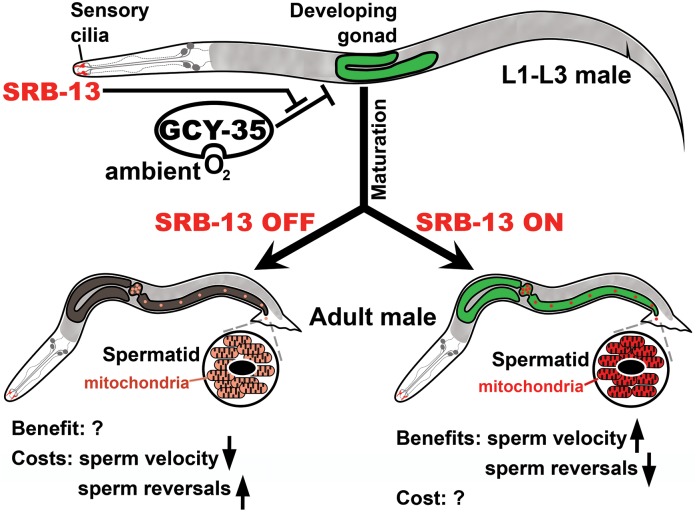Fig 7. Working model.
During the L1 to L3 larval stages, SRB-13 chemoreceptors in ASI and/or ASK sensory cilia activate Goα GOA-1 or inhibit Gqα EGL-30 signaling (or both). Gα downstream effectors are integrated into neuronal hyperoxia circuitry dependent on the neuropeptide Y receptor NPR-1, its ligands FLP-18 and FLP-21, and the GCY-35/GCY-36 O2 sensor. These circuits regulate a neuroendocrine pathway(s) that affects gene expression in multiple tissues. SRB-13 antagonizes the negative effect that GCY-35 activity has on spermatogenesis. Signaling to the gonad (SRB-13 ON) generates a long-lasting, perhaps epigenetic response that impacts the sperm’s mitochondria. Altered sperm mitochondrial function increases sperm migration velocity and decreases reversals in the hermaphrodite uterus, enabling sperm to target the spermatheca more efficiently. When SRB-13 activity is low in ambient O2 environments (SRB-13 OFF), males produce sperm that are less efficient at targeting the spermatheca. Hypoxic conditions (10% O2) suppress this GCY-35–dependent inhibitory action. We postulate that there are costs and benefits of SRB-13 signaling associated with oxidative metabolism that vary in importance depending on environment. Otherwise, males would make the most efficient sperm possible at all times. See text for additional details. ASI/K, amphid single I/K neurons.

